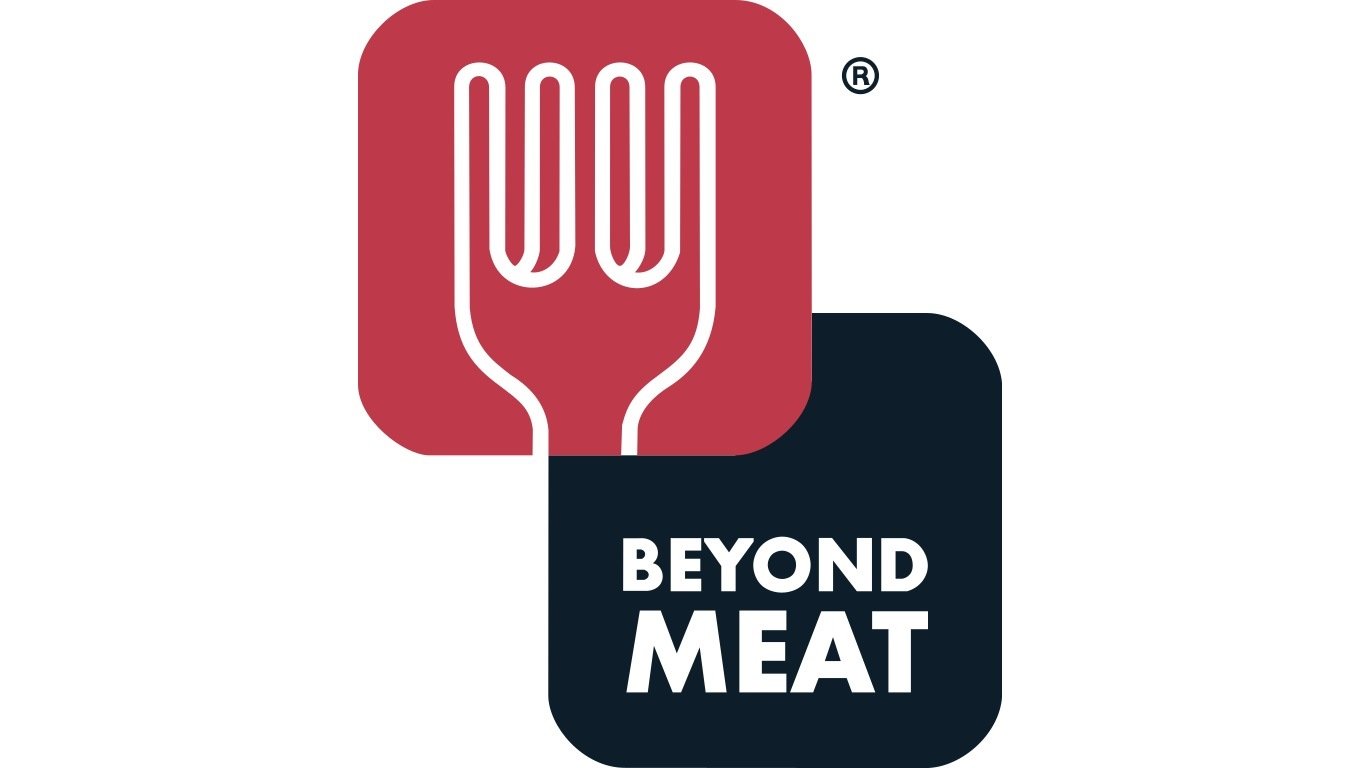Companies and Brands
Risk/Reward Finally Looking Attractive for Beyond Meat's Stock

Published:
Last Updated:

It has been a rough year for speculative initial public offerings commanding unicorn valuations. While shares of Beyond Meat Inc. (NASDAQ: BYND) are still handily above the initial public offering price of $25 and never even traded below $45 after opening, Beyond Meat’s shares were also down about two-thirds from that blow-off peak that was seen in the summer. A subsequent secondary offering has still been followed by rapid revenue growth.
The question that investors are asking now is at what price the risks no longer greatly exceed the potential rewards here. A firm called Berenberg has signaled that this may be the time when the equilibrium of risk and reward have finally met. Just don’t expect that the stock will go back and recapture its former highs, as blow-off tops and speculative frenzy trading may have gone so high that the former prices may no longer even be relevant.
Berenberg started Beyond Meat with a Buy rating and a $100 price target, representing more than 25% in implied upside. The shares closed up almost 1% at $79.01 the prior day, and its shares were indicated up over 2% at $80.80 in the premarket on Thursday.
Analyst Donald McLee noted that the recent pullback in the stock now offers an attractive entry point for new investors as its shares hold long-term value. McLee also said that fears over fresh new entrants acting as competition may be overblown. He even called taste test challenges by a recent entrance by Nestle favoring Beyond Meat.
The category of plant-based meat alternatives might not exactly be brand new, but Beyond Meat is effectively the first company that has been able to make its meat alternatives go mainstream and get into more restaurant chains than can easily be counted. The company also has been rapidly expanding its U.S. operations, with growth plans already laid in Europe and an expected launch in 2020 somewhere in Asia.
What matters in this analyst call from Thursday is that Beyond Meat is still quite speculative and still very much a high-flyer, even after considering that its shares had sold off so much from its peak. A post-IPO trading range of $45.00 to $239.71 from earlier this year and a secondary offering that was still priced up about 100% higher ($160 per share) in price than the latest prices only add fuel to the speculative fire here.
Berenberg’s fresh research report called out Beyond Meat as effectively the only pure-play public company in this rapidly growing category. Other companies have been selling meat alternatives (and alternatives to cheese) for years, but Beyond Meat was able to use a pea-based protein and other ingredients to “make the fake meat less fake.”
While an official new Buy rating is impressive, Beyond Meat’s shares undoubtedly experienced a brief blow-off top that looked and acted a lot like some of the dot-com bubble stocks from the late 1990s and 2000. That said, Beyond Meat’s products are not facing technological challenges that cannot even be used to justify higher valuations down the road as was common in the bubble of two decades ago. Still, there just may not have been enough of a trading history to know quite where the risk is worth the potential rewards, and any investor better keep in mind that this major pullback in the stock took place when the Dow Jones industrials, S&P 500 and Nasdaq were climbing to new all-time highs. So what would happen to this stock if a bad stock market came into the equation?
Shares of Beyond Meat were last seen trading up 2% at $80.65 late on Thursday, and it had traded an above-average 5 million shares on the day. Its current market cap of $5 billion is also high, considering that the Refinitiv consensus analyst targets are calling for a loss in 2019 and a mere $0.33 in earnings per share in 2020. Consensus expectations are also just about $279 million in 20189 revenues and $460 million in revenue for 2020.
Thank you for reading! Have some feedback for us?
Contact the 24/7 Wall St. editorial team.